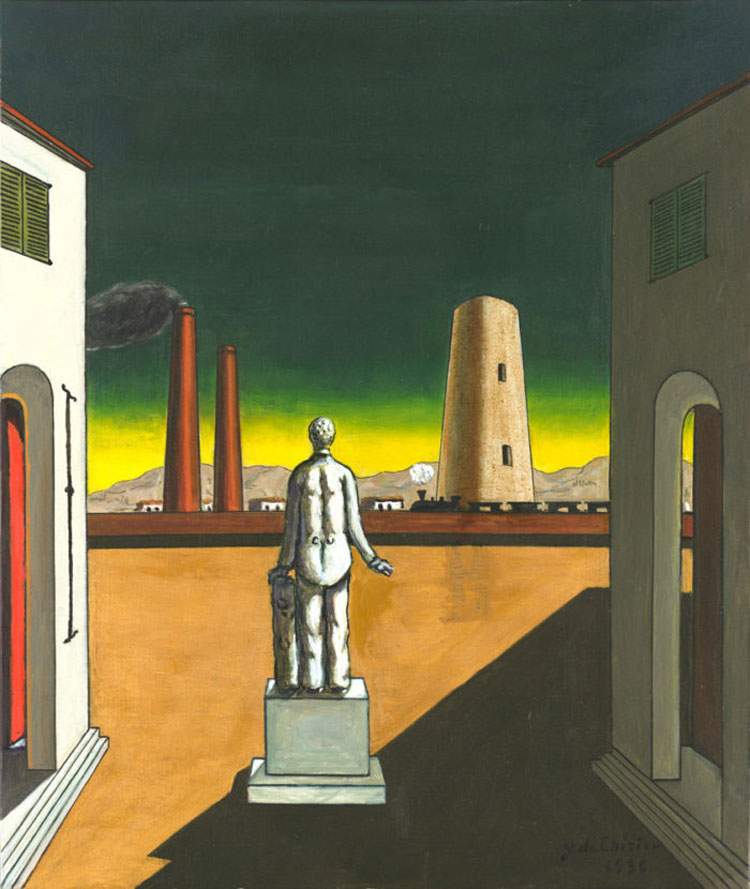With the project Piazze d’Italia (Italian Squares), the National Gallery of Modern and Contemporary Art in Rome intends to investigate Giorgio De Chirico ’s art in relation to the time of suspension and disorientation that we are living in this period: participating are literary critics, art historians, philosophers, architects and urban planners invited by the director of the museum’s headquarters Cristiana Collu.
Italian piazzas, which today appear empty, motionless and silent, have much in common with the metaphysical piazzas of Giorgio de Chirico’s painting. These have inspired in an interplay of analogies and cross-references the contributions of Gabriele Simongini(Il presagio delle Piazze d’Italia), Fabio Benzi(Le Piazze d’Italia and Gli archeologi), Paolo Picozza(Le Piazze d’Italy, Metaphysics at the Time of the Coronavirus), by Marcella Cossu(The Pictorial Vision of Giorgio de Chirico), by Franco Purini(Waiting for the Arts), by Franco Rella(In Timeless Time), by Valerio Paolo Mosco(Squares ofItaly), by Valeria Lupo(De Chirico’s Italian Squares and the Cities of Silence), by Massimo Licoccia(The Square of the Architect and the Artist), by Andrea Cortellessa(Convalescent Nature), and by Anton Giulio Onofri(Rome as a Closed City).
The result is a profound reflection on the feelings of isolation and disorientation generated by the emergency situation, but also an investigation of time. Urban emptiness and temporal suspension, two concepts that for this project published on the National Gallery blog bring these days closer to the atmospheres of the piazzas painted by Giorgio de Chirico.
Image: Giorgio de Chirico, Present and Past (1936; Rome, National Gallery of Modern and Contemporary Art)
 |
| The piazzas of Italy, today as in de Chirico's paintings |
Warning: the translation into English of the original Italian article was created using automatic tools. We undertake to review all articles, but we do not guarantee the total absence of inaccuracies in the translation due to the program. You can find the original by clicking on the ITA button. If you find any mistake,please contact us.